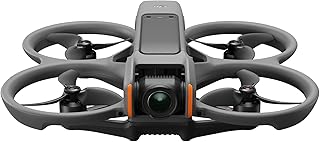DJI Drone Flight Modes: Explained
DJI drones come equipped with several flight modes, each designed to make flying safer, easier, and more efficient. Here's a breakdown of some of the most popular flight modes:
Basic Flight Modes:
* Position (P) Mode: This is the standard flight mode, offering full control over the drone with responsive movements. It's great for beginners and experienced pilots alike.
* Attitude (A) Mode: This mode maintains the drone's orientation, allowing you to control its attitude (pitch, roll, yaw) without affecting its altitude. It's useful for photography and videography where you want stable shots.
* Sport Mode: This mode unlocks the drone's full speed potential, offering rapid acceleration and agility. It's best for experienced pilots in open areas and for advanced maneuvers.
* Beginner Mode: This mode limits the drone's speed and altitude, making it ideal for first-time flyers. It's designed to make flying safer and more manageable.
Intelligent Flight Modes:
* ActiveTrack: This mode lets your drone automatically follow a subject, even if they're moving, offering a smooth and dynamic perspective. Choose from a variety of tracking modes, including "Trace," "Profile," and "Spotlight."
* Point of Interest (POI): This mode allows you to set a point of interest and have your drone orbit it while taking pictures or videos. This creates visually stunning shots of the subject from various angles.
* TapFly: This mode simplifies complex movements. Tap on the screen to designate a destination, and the drone will automatically fly there. It's great for navigating through tight spaces or achieving specific shots.
* Waypoint Navigation: Pre-program a flight path with waypoints and the drone will automatically navigate through them. This mode is ideal for aerial surveys, inspection, or simply flying a specific route.
* Return to Home (RTH): This feature automatically sends the drone back to its takeoff location. It's a safety feature that ensures your drone returns safely if you lose connection or battery power.
* Terrain Follow: This mode allows the drone to maintain a consistent altitude above the ground, even when flying over uneven terrain. This is useful for capturing smooth aerial footage of landscapes.
Other Important Modes:
* Tripod Mode: This mode slows down the drone's movements for extremely smooth and stable shots. It's perfect for capturing detail-rich pictures and videos.
* CineSmooth Mode: This mode offers a cinematic-style flight experience by providing smoother and more controlled movements. It's ideal for capturing high-quality videos.
Tips for Choosing the Right Flight Mode:
* Consider your skill level: Beginners should start with Beginner Mode or Position Mode.
* Think about the shot you want to capture: ActiveTrack is great for dynamic shots, while Tripod Mode provides stability for details.
* Evaluate the environment: Sport Mode is for open spaces, while Terrain Follow is perfect for uneven terrain.
Safety First:
No matter what flight mode you choose, always prioritize safety. Be aware of your surroundings, follow local regulations, and practice responsible flying.
By understanding the different flight modes available, you can unleash the full potential of your DJI drone and capture stunning aerial footage.


